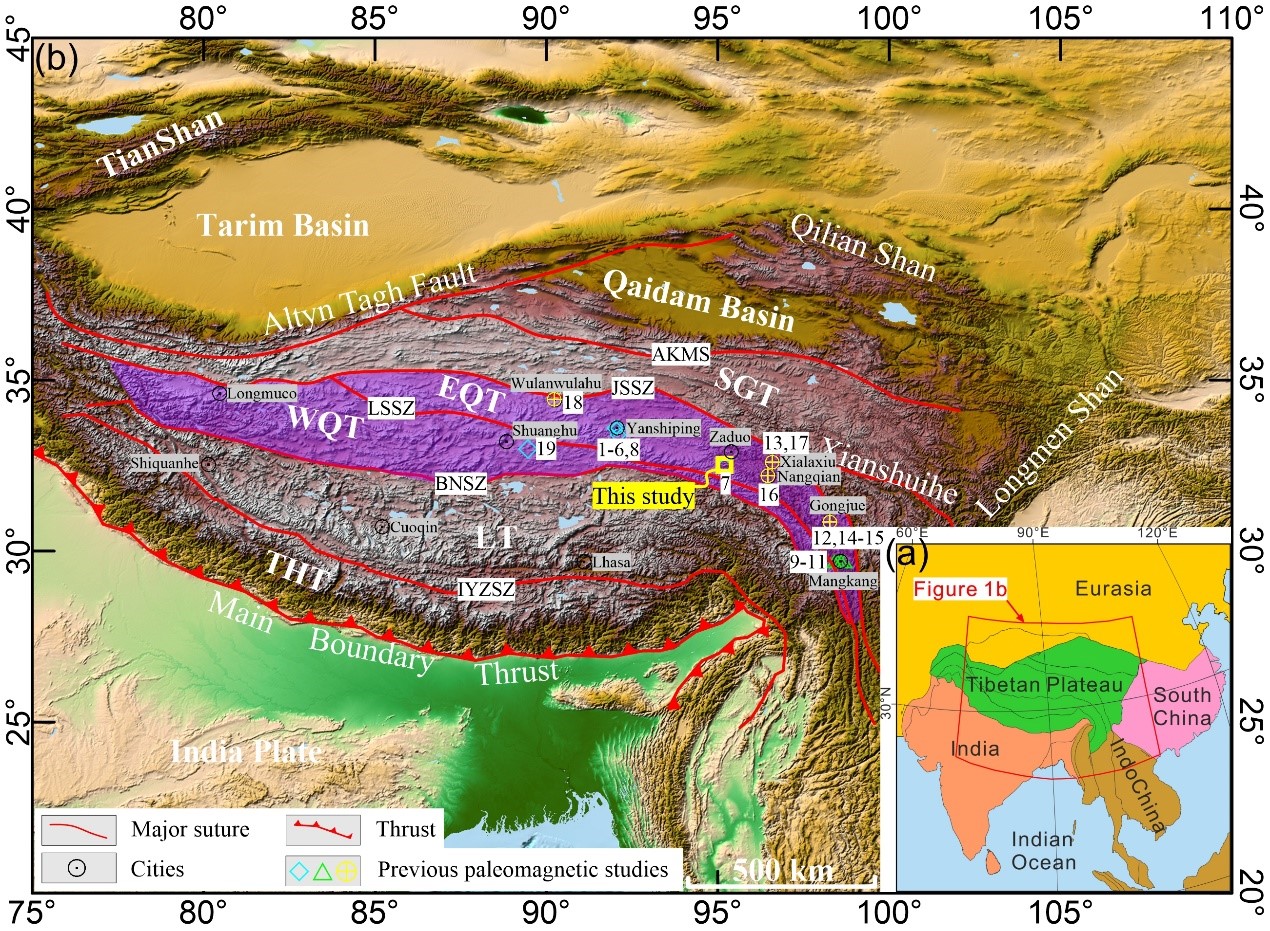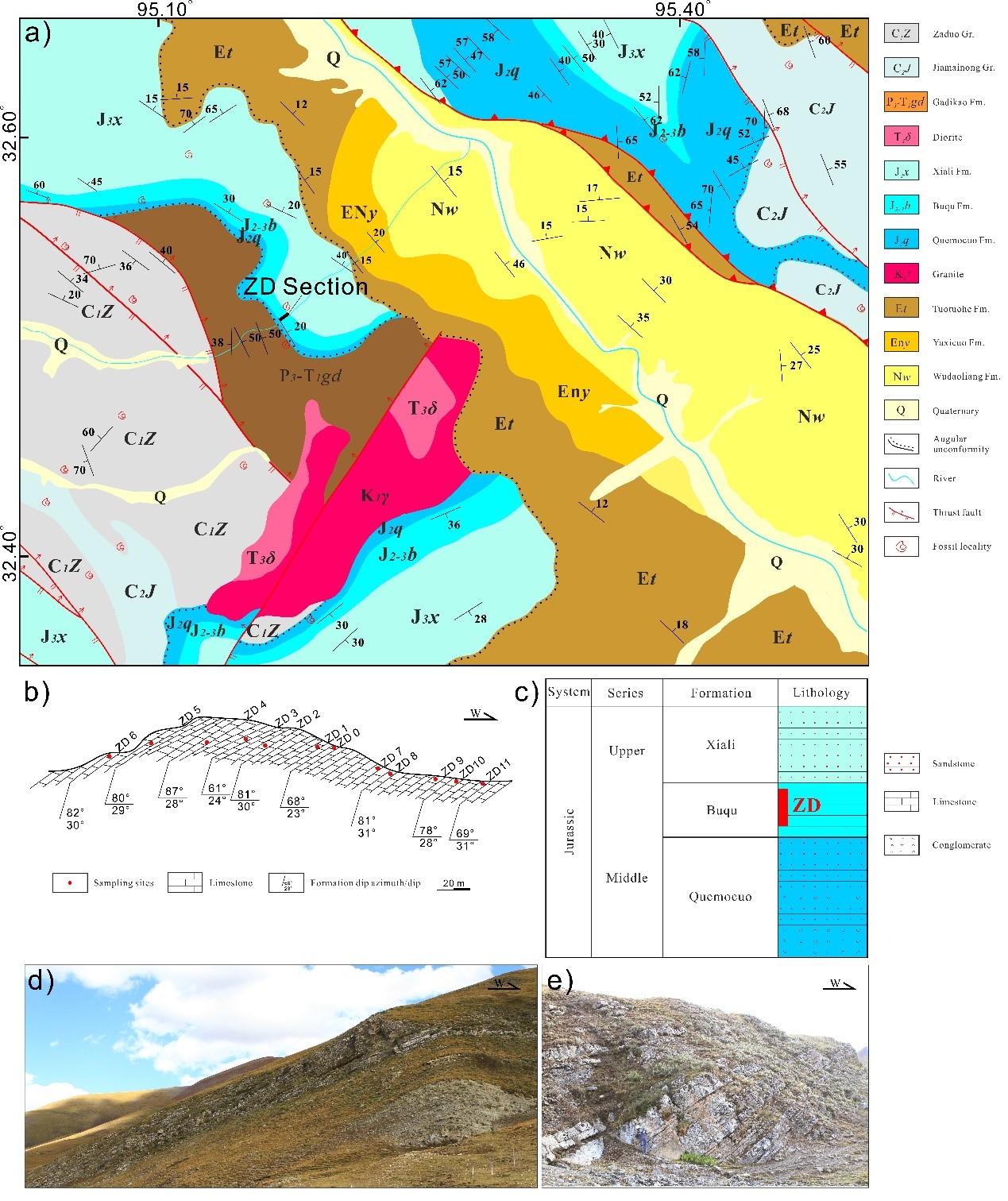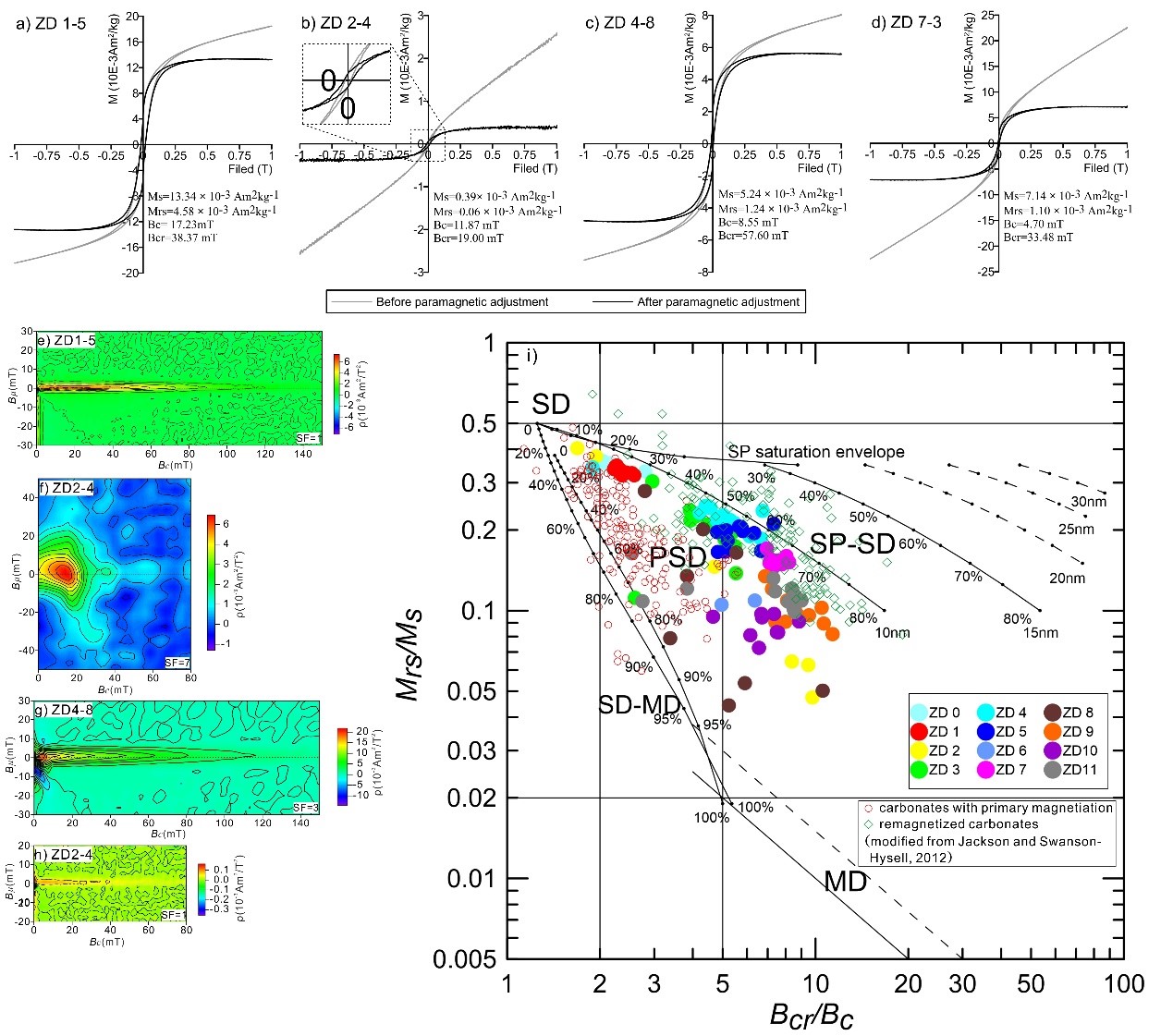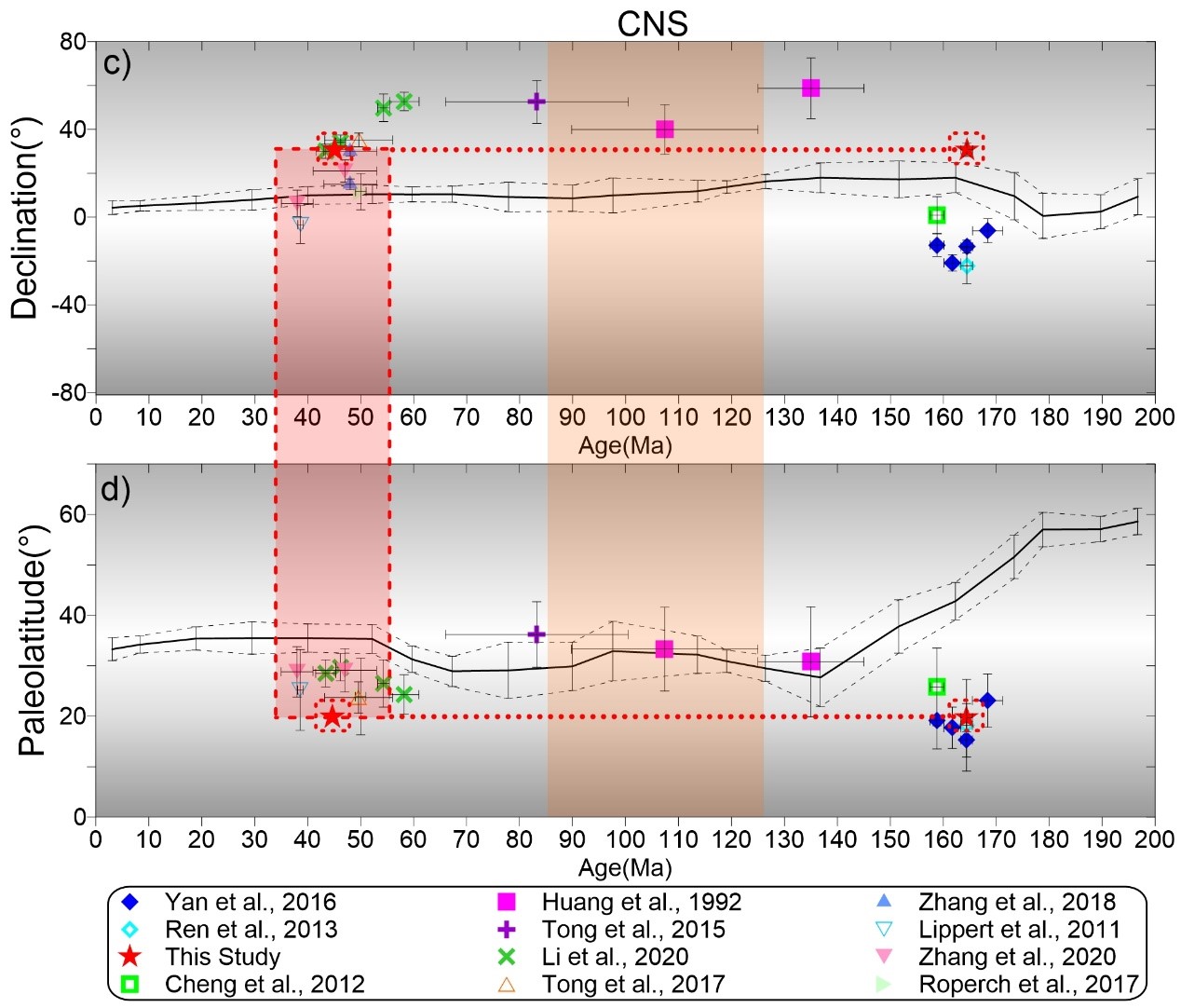The Qiangtang Terrane is a long and narrow major crustal fragment located in the central Tibetan Plateau. The Mesozoic drift history of the Qiangtang Terrane is still under debate, as the investigations are rather limited considering the size of the terrane. Paleomagnetism is an effective methodof direct constraining the paleolatitudinal movements of terranes. Recent paleomagnetic studies on the same Middle-Upper Jurassic marine sedimentary rock unit (the Yanshiping Group) yielded different paleolatitudes, ranging from ~20°N to 35°N. A major challenge in paleomagnetic studies is that remagnetization interferes with paleogeographic reconstructions, which has been increasingly recognized. It occurs unpredictably either pre-folding, syn-folding or post-folding rather than being restricted to a certain period of time in certain regions. Carbonate rocks are particularly notorious for being prone to, which may account for the discrepancy in paleolatitudes.
Given the situation, Prof. Yan Maodu from the ITPCAS and his colleagues carried out detailed rock magnetic and paleomagnetic study on the Middle-Upper Jurassic limestone in the Zaduo area. Both thermal and alternating field demagnetizations were conducted to isolate the characteristic remanent magnetization (ChRM). The obtained ChRMs yield a positive reversals test. However, detailed rock magnetic measurements (e.g., κ-T curves, IRM acquisition and back-field curves, thermal demagnetization of IRM, IRM component analysis, hysteresis loops and FORC diagrams) indicate the presence of authigenic magnetite grains, which are dominantly of SSD size, with cogenetic fine-grained SP size particles. This character is often treated as the ‘remagnetization fingerprint’ in limestone. In addition, the microscopic observations show widespread recrystallization and epigenetic formation of gypsum veinlets, in line with hydrothermal activity with the likelihood of remagnetization. Thus, the obtained ChRMs (12 site means of Ds = 30.6°, Is = 35.6°, κs = 182.9, α95 = 3.2°, paleopole of 59.8°N, 202.7°E, A95 = 2.8°) for the Jurassic limestone samples of the Buqu Formation in the Zaduo area were remagnetized, likely acquired after the India–Eurasia collision. The original sediments were likely anoxic because of the high organic carbon fluxes that prevailed during their deposition. After the India–Eurasia collision, it is envisaged that conditions became more oxic, giving rise to oxidation of iron sulphide to authigenic magnetite and the chemical remanent magnetization acquisition. The ~20° clockwise rotation of the Zaduo area relative to Eurasia coincides with the rotation pattern in the eastern part of the Qiangtang Terrane, indicating that the clockwise rotation accommodating the India–Eurasia collision was also prevailing in the Zaduo area.
This work is recently published in Geophysical Journal International, co-sponsored by the Second Tibetan Plateau Scientific Expedition Program (Grant 2019QZKK0707), the Strategic Priority Research Program of Chinese Academy of Sciences (Grant XDA20070201), the Natural Science Foundation of China (Grants 41974080 and 41804065), the Basic Science Center for Tibetan Plateau Earth System (CTPES, Grant 41988101-01), and China Scholarship Council.
Article link: https://academic.oup.com/gji/article-abstract/228/3/2073/6381694

Figure 1 Location of the study area (yellow square)

Figure 2 Geological map and field photographs

Figure 3 Some rock magnetic results

Figure 4 Microscopic observations

Figure 5 Correlation of the observed paleomagnetic declination and paleolatitude with the available ones from the Eastern Qiangtang Terrane


